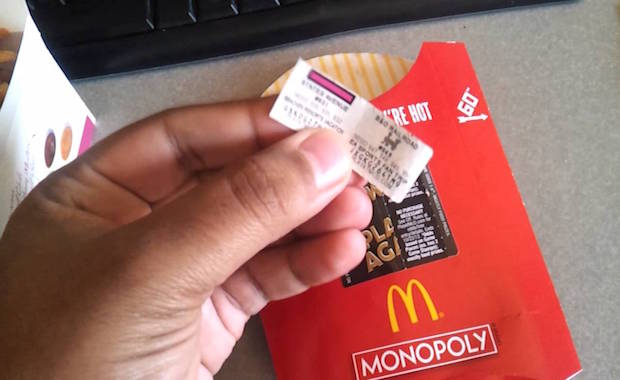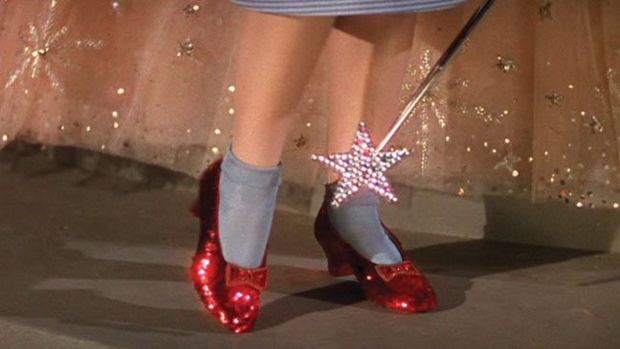Advertisement
Lifestyle
Common Mistakes You’re Making When Growing Tomatoes
By
Jason Owen
3 min read
- # Backyard Gardener
- # BGARD
- # blossom-end rot
Advertisement - Continue reading below
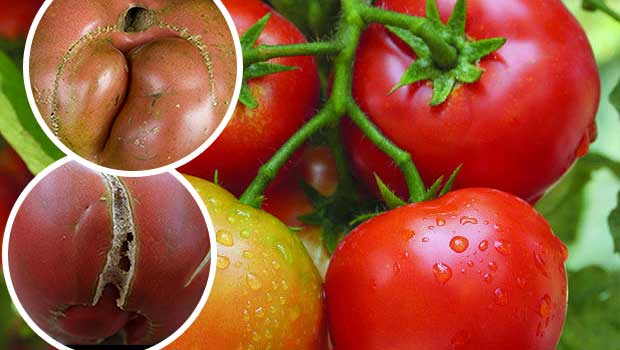
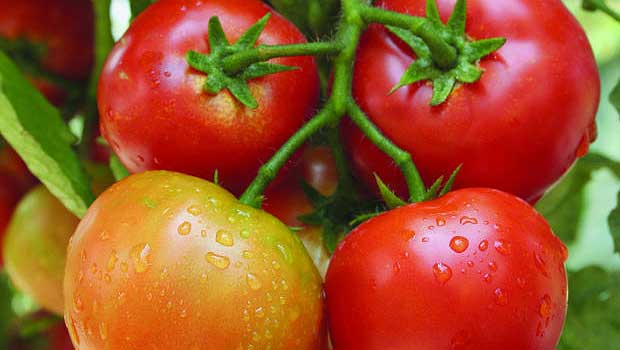
Tomatoes are a highly versatile fruit to have in any kitchen, which is one reason why gardeners love to plant them in their backyard. Another reason the plump red fruit is seen in gardens across the country is their ease of growing.
But even though they are pretty easy to cultivate, there are several common mistakes many gardeners make when planting and caring for their tomatoes that can ruin a plant or the entire crop. Avoid these common mistakes when you’re planting tomatoes.
Catfacing
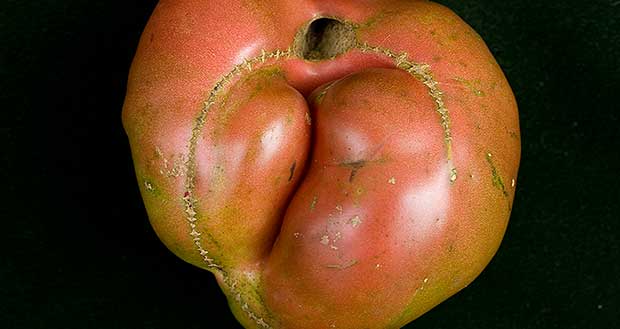
Catfacing is when your tomatoes (generally larger varieties are more susceptible) become scarred or holed at the blossom end of your fruit. While the exact cause remains unclear, Gardening Channel lists cold weather, high nitrogen levels, and contact with certain herbicides as possible causes.
To avoid catfacing, make sure not to plant too early in your growing season when the soil can become intemperately cold. Also, recognize any herbicides that might be doing damage.
Growth Cracks
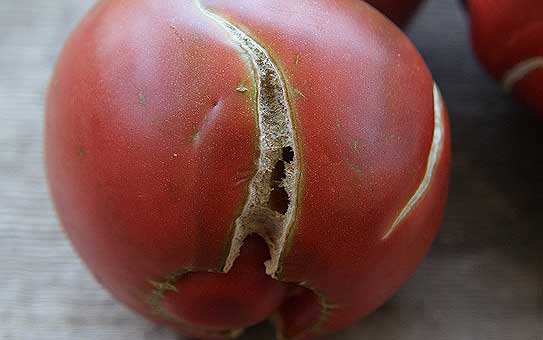
If large “cracks” are seen coming down from the stem of your fruit, then you’ve got growth cracks. The cracks are more susceptible to bacteria and fungus, which will ruin the fruit. The cracks form when there is a rapid growth period brought on by drastic environmental changes, such as a sudden influx of water after a drought.
While we can’t control the weather, you can control consistency in watering. If drastic weather changes occur, altering your water amounts will help avoid the cracks. Using a mulch to keep water moisture consistent can also help.
Blossom-End Rot
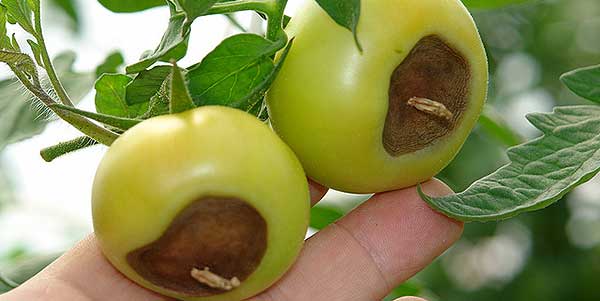
If you’re seeing a dark, leathery patch on the bottom of your fruit, you’ve got blossom-end rot. What causes this? It’s a calcium deficiency in the tomato likely caused by the weather being too cold or too hot and an inconsistent water supply. Too much nitrogen fertilizer can also play a role.
To avoid blossom-end rot, planting your tomatoes at the right time is crucial. Don’t plant them too early in the season when the soil is cold. Once they are planted, be sure to water and fertilize evenly.
Phosphorus Deficiency
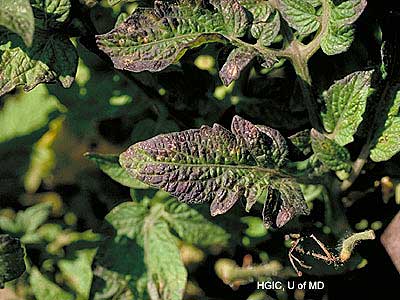
A lack of phosphorus can kill your plants, but you can easily avoid this one by making sure to plant your seeds once the weather is warm enough and frosty nights have passed.
Sunscald
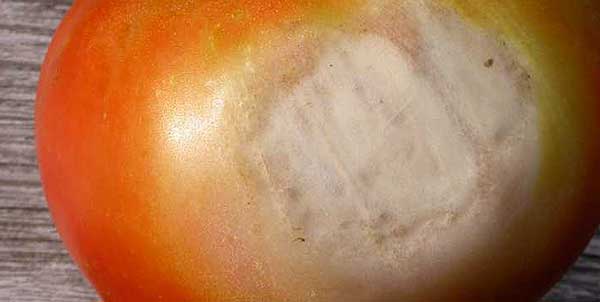
When your plants receive too much sun in one particular spot, a white/pale yellow discoloration can occur called sunscald.
Sunscald might be caused if you’re heavily pruning your plant and removing leaves that may help protect/shade the fruit. Alternatively, you can create your own shade for the plant to reduce sun exposure.
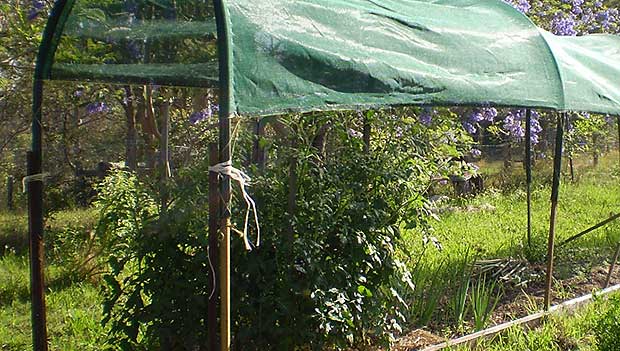
Herbicide Overuse
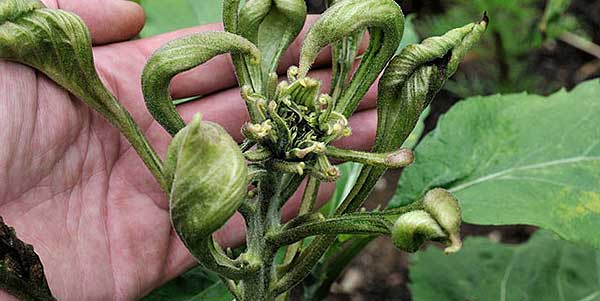
Tomatoes are a delicate fruit and can be easily injured by herbicides, especially hormone-type ones, like ones you might use on your lawn to remove dandelions.
This is pretty self-explanatory, but be sure to keep herbicides away from your tomato plants. Be conscious of the spray drifting with the wind when applying to your lawn, don’t use a bottle sprayer that had herbicide in it before, and avoid using grass clippings that were exposed to herbicide as mulch.
Soil Rot
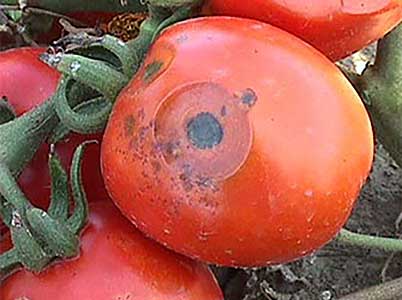
If you live in an area with a lot of moisture, especially areas that are warm and humid, your soil may be naturally inclined to grow several different types of fungus, which can cause soil rot.
The best way to prevent soil rot is to make sure your fruit (even while green) doesn’t touch the soil with a good tomato ladder to keep them far off the ground.
Another way to help prevent soil rot is to rotate your crops, making sure not to plant the same crops in the same spots year after year.
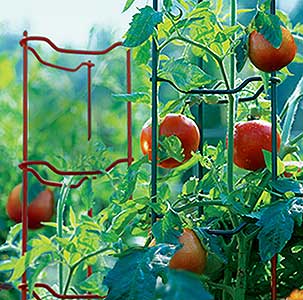
(h/t Gardening Channel)
Advertisement - Continue reading below



